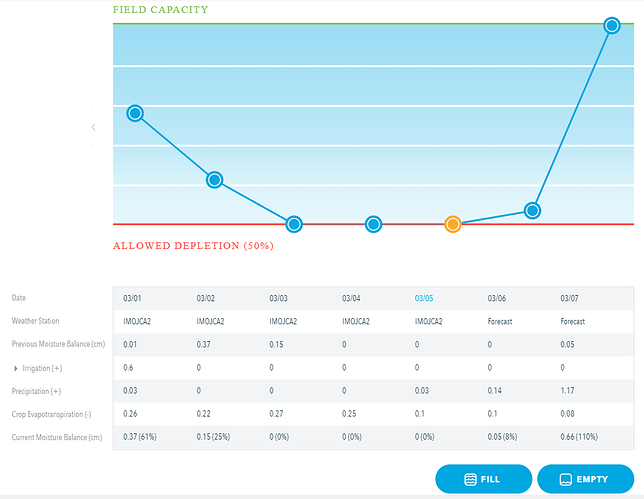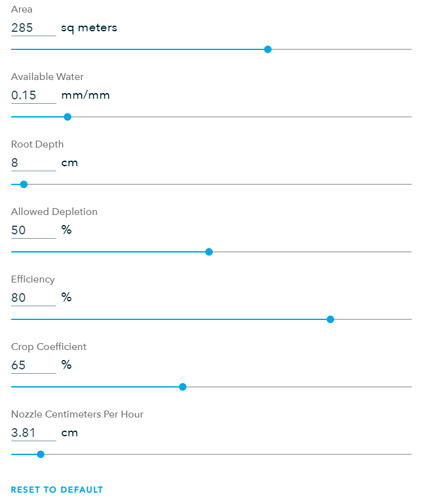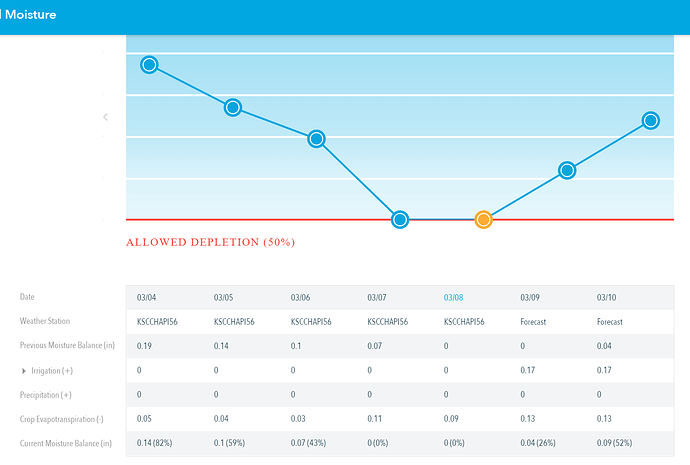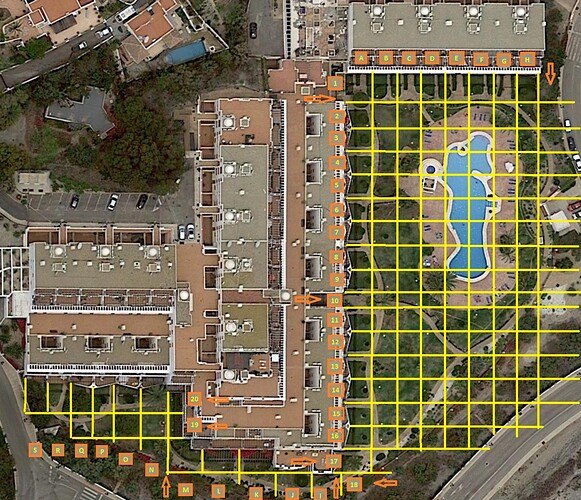The ET is not something, a user is manipulating in Rachio Platform. Unless, of course you are the Sun, Wind, Rain, etc…
I had checked the weather conditions, and the relative ET looked like it was misreported data…I have no claim except for the temperature reporting.
The thought was since he was just receiving data on a startup. Not anything to do with him changing Crop Coefficients in his Zones. If you’ve seen something similar, either Rachio in error or an extra adult beverage could have marginal made the difference in your objective analysis in reference. Though, since I have seen similar nuances without, I would verify reference ET daily, from various sources especially during the hot summer days, and not from Rachio.
It’s just common sense that the reference ET doesn’t go from .25 to .09 or there about, with the same temperature running at a daily basis. Maybe, with a Tornado at that current ambient temp. I don’t know.
@championc You cannot just set your precipitation rate at whim. Again, when you initially asked for guidance months ago, my suggestion which is what we normally do is to check each of the nozzles, and it’s manufacturer’s specifications and use it as a guide. Start there!
@rraisley I enjoy your mapping interest which could help me greatly and I would have to go back to your posts in the future would like to use your proficiency and would be a good student, however…
One, you must get the PR from the watering orifice (Nozzles) as an element to figure out a baseline and water schedule, this is how it’s done. This is how it’s done in Rachio and in every Irrigation class, and design book will tell you this. Not sure why you @rraisley insist it’s not important? It is!
Irrigation Run Time in it’s simplest form:
Is based On Time, Interval, Plant Factor or Use, Application Rate in inches/hour, and the System Efficiency.
[http://irrigation.wsu.edu/Content/Calculators/General/Irrigation-Run-Time.php]
Since, I base a lot of my business on efficiency, the systems balance in specification is important to realize the best performance, and eventual water savings.
PR as defined and calculated.
https://www.rainbird.com/professionals/irrigation-design-tip-calculating-precipitation-rates
You need to find out GPM, yes you need the quantity of nozzles and it’s performance for the area. This is another design elements. these are all basics of what is translated in the software . This is all outline in the Rainbird link above.
To be simple, we always ask ourselves what’s the PR? We then correlate that to the Plant’s needs, and ET. Exactly, what Rachio is asking you to enter, and every other company tries to do, you just have to indicate the correct parameters for it to calculate and run. Not all Companies are the same and Rachio is far from perfect.
The fact though is, your able to make corrections and adjustments in the platform to work with your landscape needs, at a key stroke; be connected to weather data, in almost real time, you can operated it remotely with your hand held device, and it’s a far cry from a MWF 10 minutes each Zone Setting.
Lastly, should you change nozzles? Well, if new nozzles are 75% more efficient and uniformity goes up than the existing nozzles which could be at 50 % efficient with less uniformity, and your current system is 60 % efficient, than I know what I would do, how about you? Again, put the system in balance and in maximum specification and you can then determine water conservation upgrades and investment strategy. Good luck.








